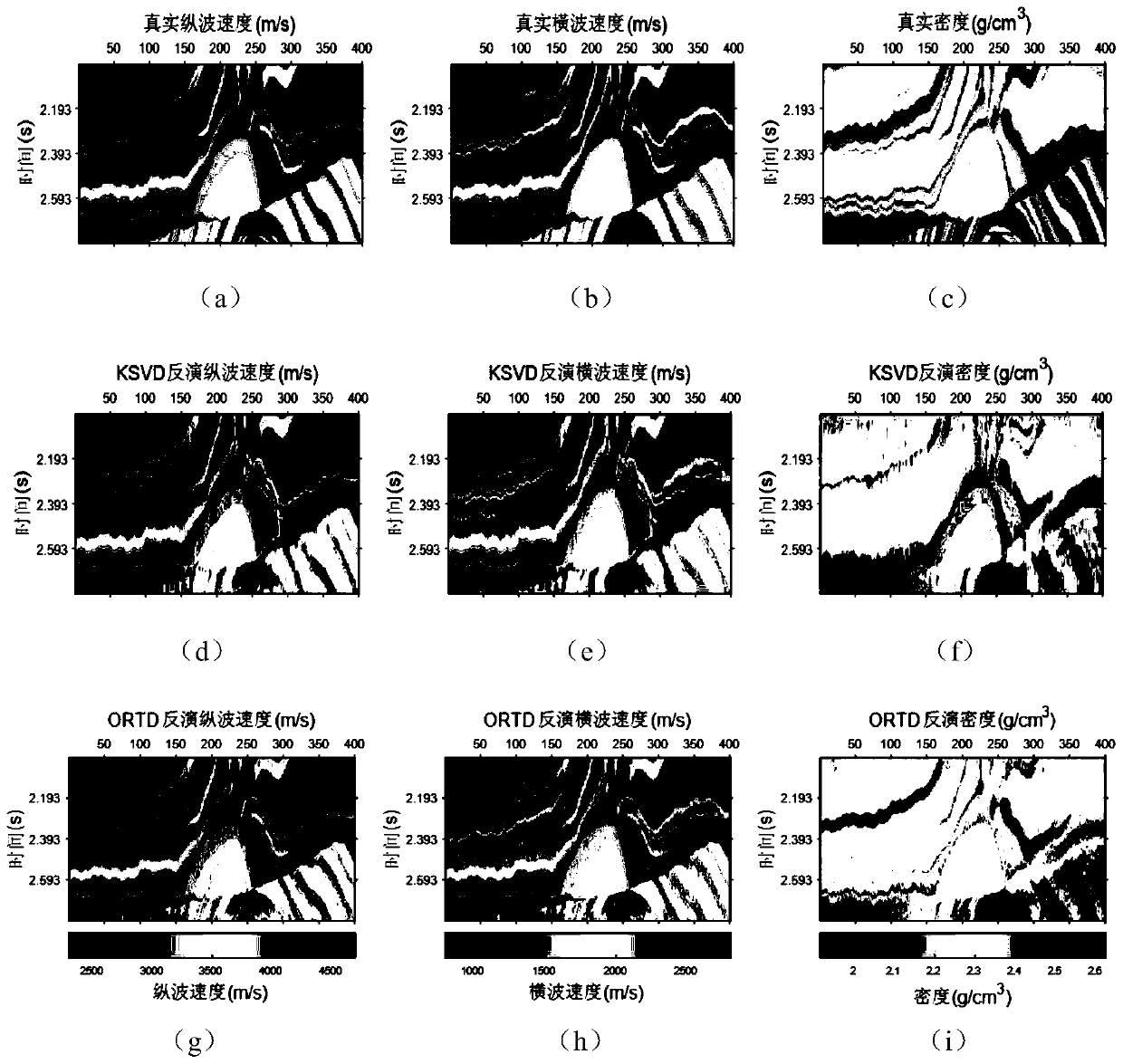Sparse representation regularization pre-stack AVO inversion method based on fast orthogonal dictionary
A sparse representation and dictionary technology, applied in the field of geophysical exploration and interpretation, can solve problems such as limiting the application of algorithms, iterative increase in the dictionary learning process, and redundant overlapping of small blocks, so as to improve the sparse inversion rate, promote development and application, and parameter Adjust the effect of convenience
- Summary
- Abstract
- Description
- Claims
- Application Information
AI Technical Summary
Problems solved by technology
Method used
Image
Examples
Embodiment 1
[0090] In order to evaluate the pre-stack AVO inversion rate based on the regularization constraint promoted by orthogonal dictionary sparsity of the present invention, and check its inversion effect. After sampling and time-depth conversion processing, the Marmousi model with a time domain size of 200×400, a sampling interval of 4 ms and a Reich wavelet with a main frequency of 25 Hz were selected to test the proposed algorithm, as shown in figure 2 (a) shows the true P-wave velocity, such as figure 2 (b) shows the shear wave velocity, such as figure 2 (c) shows the density profile. Consistent with the inversion method of KSVD dictionary sparse constraints based on redundancy assumptions, we selected the same 20-well data from the 400-track data of the Marmousi model to take small blocks as training samples. In this embodiment, the orthogonal dictionaries of P-wave velocity, S-wave velocity and density used for inversion constraint are respectively D P 、D S and D ρ , ...
Embodiment 2
[0095] In order to test the practical applicability of the proposed method, the method of the present invention is applied to the inversion of pre-stack actual data in a certain work area in China. The size of the time domain of the actual data is 80×853, and the training dictionary process uses 13 The well data are low-pass filtered and small blocks are taken to form training samples. Such as image 3 Shown is the comparison of the inversion results based on the two dictionaries, where image 3 (a) is the P-wave constrained inversion by the KSVD dictionary (dictionary size is 50×700), image 3 (b) is the shear wave constrained inversion by the KSVD dictionary (dictionary size is 50×700), image 3 (c) is the KSVD dictionary (dictionary size is 50×700) constrained density inversion profile, image 3 (d) is the P-wave constrained inversion by the ORTD dictionary (dictionary size is 50×700), image 3 (e) is the shear wave constrained inversion by the ORTD dictionary (dictiona...
PUM
 Login to View More
Login to View More Abstract
Description
Claims
Application Information
 Login to View More
Login to View More - R&D
- Intellectual Property
- Life Sciences
- Materials
- Tech Scout
- Unparalleled Data Quality
- Higher Quality Content
- 60% Fewer Hallucinations
Browse by: Latest US Patents, China's latest patents, Technical Efficacy Thesaurus, Application Domain, Technology Topic, Popular Technical Reports.
© 2025 PatSnap. All rights reserved.Legal|Privacy policy|Modern Slavery Act Transparency Statement|Sitemap|About US| Contact US: help@patsnap.com



